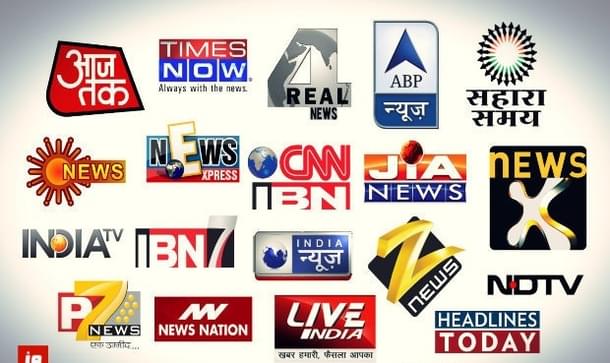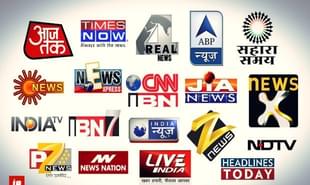Books
Does The Media Want To Know?
Praful Shankar
Jul 10, 2015, 06:35 PM | Updated Feb 24, 2016, 04:33 PM IST
Save & read from anywhere!
Bookmark stories for easy access on any device or the Swarajya app.


In the mad rush for TRPs, political power, and ideological fulfillment, almost all sections of the Indian media have forgotten the role they are meant to play. However, experience shows that the electorate is neither as partisan nor as immature as news anchors
– All the efforts to bring the Modi government down a notch, by the media, on the eve of the one-year anniversary had hit a dead wall, with the national mood being quite different from theirs.
– Democracy tends to push the political class into introspection periodically. Sadly, no such mechanism exists for the media – allowing it to live continuously in denial
If one had followed the news narrative leading up to the first anniversary of the Modi government, it would have been difficult to escape the deeply cynical mood reflected in the newsroom discussions across almost all English news channels. Equally obvious was the vigorous propagation of the ‘minorities under attack’ narrative based on purposefully ill-informed and selective reporting on sporadic Church ‘attacks’ across India. It seemed as though the news channels had drawn the conclusion – from within the AC rooms of their plush offices in the national capital – that not much had changed post the ascent of Modi and that the public has lost faith in Prime Minister over the course of the year.
Unfortunately for them, the flood of opinions polls and surveys which accompanied the one-year anniversary quickly proved that the national mood was quite different from that in news studios. Across surveys, the Prime Minister’s approval ratings were found to hover in the mid-60s with the approval for his government oscillating between the late-50s and early-60s depending on the surveying organization. The electorate, it seemed, was neither as partisan nor as immature as news anchors. The public had understood the scale and complexity of the challenge the government has been confronted with and had signed off on both the intent and the efforts of the new government. More disappointingly for the media, all their efforts to bring the Modi government down a notch on the eve of the one-year anniversary had hit a dead wall.

Yet, India’s news channels are nothing if not stubborn. The past few weeks have seen a continued effort to force their narrative on the general public. The International Yoga Day, an event enthusiastically received across the country, was covered with the same bout of sneering elitism and cynicism that had accompanied earlier events of the Modi government. And there is not a person left in urban India today who has managed to escape the live tracking of Lalit Modi’s Twitter updates that engulfed the public airwaves for the better part of a month.
In the former case, the media turned a celebration of one India greatest legacies into a distasteful debate on secularism. And in the case of the latter, the TV media truly unleashed their fangs. After more than a decade of having their way in almost every confrontation with successive governments and in sight of what they thought would be their first major scalp of the Modi premiership, caution and fair analysis were thrown to the winds. While most agree that the two BJP leaders at the center of the controversy may have acted with some degree of hurriedness, it is equally true that, until now, there has been absolutely no case of illegality or corruption in either of their actions.
When the resignation from Sushma Swaraj was ruled out by the BJP President, the media – with a good dose of help from Lalit Modi – trained their guns on the Rajasthan CM. Each dubious Jairam Ramesh press conference was treated like the gospel truth with absolutely no effort made from the side of the media to assess the factual accuracy of wild allegations being hurled. The media trial descended to ridiculous depths when news channels began to demand the resignation of Swaraj on the count that Lalit Modi had offered a job to her husband. The fact that Swaraj Kaushal has refused the offer did not seem to be relevant to the frothing news hounds.
For a while, it seemed as though the scandal would continue for as long as Lalit Modi posted updates on his Twitter handle. That is, until he named the Gandhis and the media inexplicably went into studied silence.
Even more than the fact that Lalit Modi had begun to venture into uncomfortable territories, what the media had not accounted for was the Modi government completely stonewalling any demand that was made – whether it was the resignations of the ministers or even a statement from the Prime Minister.
Over 10 years of dealing with numerous media trials and manufactured controversies would have made Narendra Modi almost immune to the pressures that can be mounted by any voluble news anchor – even the ‘Master of the Screaming Primetime’.
However, more than the ample experience of staring down a vitriolic media that he has behind him, what would have allowed the Prime Minister to be so summarily dismissive of the media’s gyrations was the fact that the more TV channels tried to balloon a relatively minor issue into a full-fledged national crisis, the more it seemed to lose steam with the general public. Once again, it seemed as though the frantic attempts by the media to manufacture public outrage through sheer belligerence had failed summarily.
If, by some remote chance of luck, the media were to see some cause for introspection, one would suggest that it should begin with the re-examination of the extent of their power to influence the general public. The relationship between the general public and the TV media has changed quite a bit over the past decade. Political results over the past few years have shown that the public have moved beyond blind acceptance of media viewpoints as their own. And what has certainly not helped their case is that the both the current and emerging generations of journalists seem to be driven more by hubris than by any analytical or investigative leanings.
Even in the most mature of democracies, institutions do tend to exceed their mandates at some point or the other. What we had seen in India for a long period post-Independence was a case of overreach of the political class – which reached its zenith during the Emergency and has since watered down, though not disappearing completely. The past few years have seen numerous instances of the political class brought down to earth by a combined effort of the judiciary and the media.
Democracy – by its very nature – tends to push the political class into introspection periodically. Sadly, no such mechanism exists for the media, allowing it to live continuously in denial.
The loss of public credibility of the media poses great risks not just for the media themselves but for democracy at large. Conflicting and self-correcting mechanisms are imperative for any democracy to succeed and in today’s India – where it sometimes takes decades for the judiciary to dispense justice – a credible media is vital for common citizens to be able to make informed choices at the polling booth.
In their mad rush for TRPs, political power, and ideological fulfillment, India’s media seems to the forgotten the role they are meant to play. And consequently, it is the political class that is laughing all the way to Parliament.
The author can be contacted at prafulshankar@gmail.com or the twitter handle @ShankarPraful
Praful Shankar is a political enthusiast and tweets at @shankarpraful.





